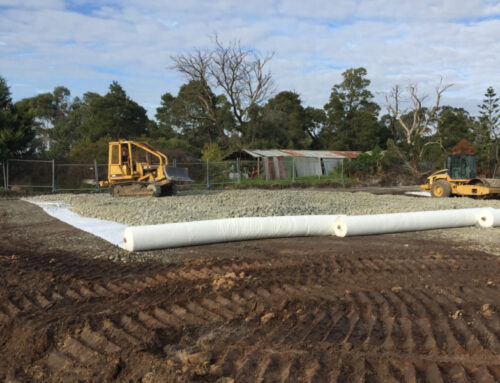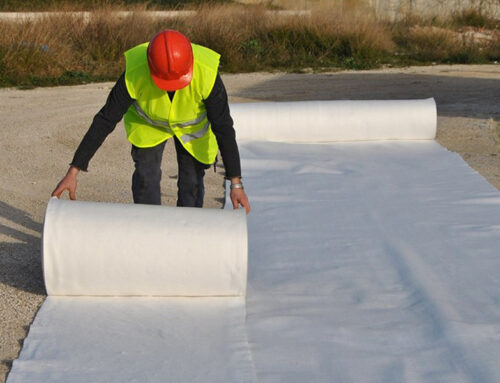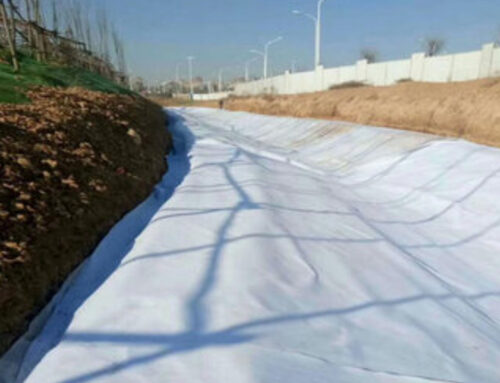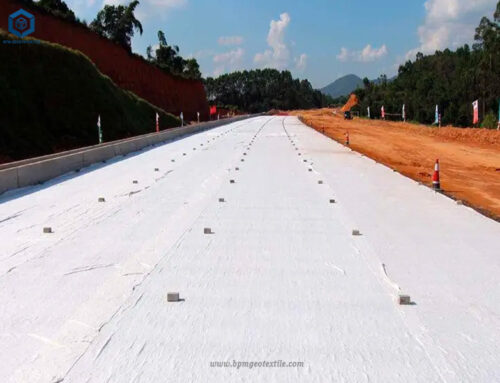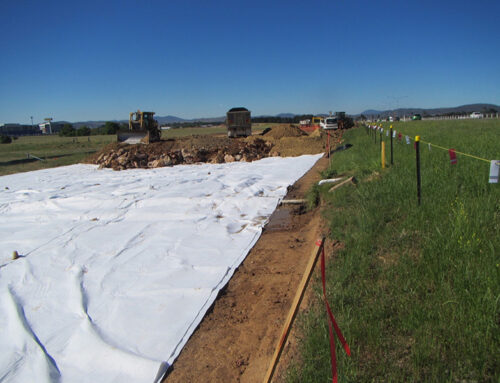Geotextile nonwoven fabric, also known as nonwoven geotextile fabric, is a high-performance geotechnical material which plays a decisive role in various engineering projects. With its excellent properties such as high strength, high waterproofness, high corrosion resistance, and high toughness, geotextile nonwoven fabric is widely used in waterproofing and anti-seepage protection of highways, railways, embankments, earth-rock dams, airports, sports fields and other projects, as well as in industry, environmental protection, etc. Isolation and protection of areas. Therefore, it is important to choose a high-quality nonwoven geotextile fabric.
1. What Is Geotextile Nonwoven Fabric?
Geotextile nonwoven fabric is an engineered fabric used in civil engineering and construction applications. It is made from synthetic fibers, typically polyester or polypropylene, which are bonded together mechanically, thermally, or chemically. These fabrics offer a range of functions within the soil structure to enhance the performance, durability, and sustainability of various projects.
Nonwoven geotextile fabric possesses excellent filtration properties and a high level of tensile strength. It is commonly needle punched, especially in the case of polypropylene staple fiber fabrics used in the United States. These fabrics serve as separation materials when applications require higher water flow. They can be used as separators between drainage gravel backfill behind retaining walls, as wrapping for stone surrounding pipes in French drains, or as underlayment beneath riprap.
Geotextile nonwoven fabric can be treated to resist water flow and utilized as pavement underlays by binding with asphalt tocreate a barrier against water infiltration.
The primary functions provided by Geotextile nonwoven fabric include separation, filtration, drainage, reinforcement, and erosion control. These fabrics are designed to improve the overall performance and longevity of civil engineering projects, ensuring their stability and protecting them from erosion and other environmental factors.
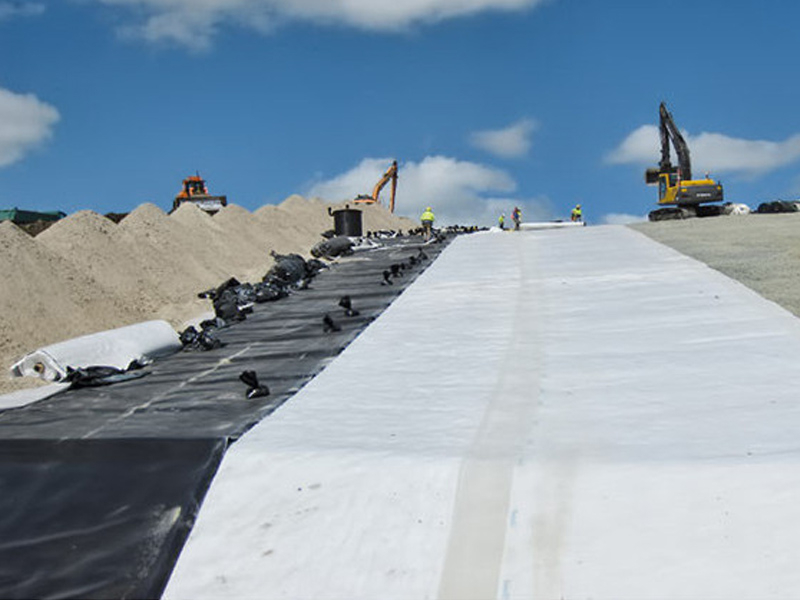
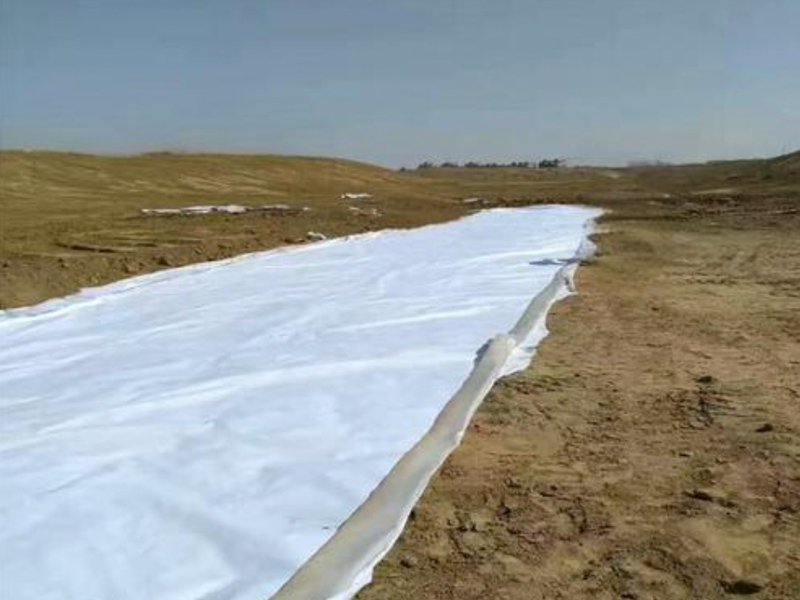
2. What Are Advantages of Geotextile Nonwoven Fabric?
2.1 Material Composition
The material composition of geotextile non woven fabric is mainly composed of synthetic fibers, such as polyester fiber (PET) or polypropylene fiber (PP).
These synthetic fibers are processed through specific processes, such as needling or weaving, into a highly water-permeable geosynthetic material. These fibers have high strength, wear resistance, corrosion resistance and other properties, allowing nonwoven geotextile fabrics to perform well in a variety of engineering environments.
2.2 Mechanical Properties
The mechanical properties of non woven geotextile fabrics are a key factor in whether they can effectively function in practical applications. Here are some key features regarding the mechanical properties of nonwoven geotextile fabrics:Tensile strength,Tear strength,Elongation,Wear resistance.In addition, nonwoven geotextile fabrics also have good water permeability, filtration and drainage properties. These properties complement their mechanical properties and jointly ensure the effectiveness of geotextiles in engineering applications.
2.3 Hydraulic Properties
The hydraulic performance of geotextile nonwoven fabric is one of its key characteristics, mainly reflected in its water permeability, filtration and drainage properties.
Geotextile nonwoven fabric has good water permeability. This means that water can easily pass through the geotextile, preventing water from accumulating on or inside the geotextile, ensuring the stability and durability of the engineering structure. This water permeability makes nonwoven geotextile fabrics widely used in fields such as water conservancy projects and highway and railway construction.
Geotextile nonwoven fabric also have excellent filtration properties. It can effectively filter out fine particles in the soil, preventing these particles from clogging drainage systems or entering other engineering structures. This filtration not only helps keep drainage systems clear, it also prevents soil erosion and runoff, thereby protecting the safety of engineering structures.
Nonwoven geotextiles also exhibit good drainage properties. It can quickly drain moisture from the soil, reduce soil moisture, and prevent various problems caused by moisture accumulation. This drainage performance plays an important role in preventing foundation settlement and improving soil stability.
2.4 Durability and Longevity
First of all, the durability of geotextile nonwoven fabric is closely related to the anti-aging properties of its materials. High-quality nonwoven geotextile fabrics are made of weather-resistant synthetic fibers. These fibers can resist the erosion of ultraviolet rays, high temperatures, chemical corrosion and other adverse factors, thereby maintaining the stability of their performance. In addition, the durability of nonwoven geotextile fabrics is also affected by its manufacturing process and stitching quality. Advanced manufacturing processes and high-quality stitching ensure that geotextiles are not prone to breakage or cracking during use.
Secondly, the service life of geotextile nonwoven fabric is affected by the use environment and maintenance conditions. Under harsh environmental conditions, such as strong ultraviolet radiation, high humidity, high temperature, etc., the service life of nonwoven geotextile fabrics may be shortened. In addition, improper installation and maintenance can also lead to premature geotextile failure. Therefore, when using nonwoven geotextile fabrics, you need to pay attention to selecting suitable environmental conditions and follow correct installation and maintenance specifications.
2.5 Environmental Compatibility
Nonwoven geotextiles excel in environmental compatibility. First of all, the synthetic fiber materials used in its manufacturing process, such as polyester fiber and polypropylene fiber, have good environmental stability, are not easily decomposed to produce harmful substances, and do not pollute soil and water bodies. This allows the nonwoven geotextile fabric to have no negative impact on the surrounding environment during use.
Secondly, the recyclability of geotextile nonwoven fabric is also an important reflection of its environmental compatibility. After the project is completed, the discarded nonwoven geotextile fabrics can be recycled and reused to reduce the impact on the environment. This recycling method not only conforms to the concept of sustainable development, but also helps reduce resource consumption and waste generation.
Nonwoven geotextiles typically do not require the use of additional chemicals, such as additives or preservatives, in their applications, further reducing their potential impact on the environment. This makes nonwoven geotextile fabric an environmentally friendly engineering material.
3. What Is Geotextile Nonwoven Fabric Used For?
Geotextile nonwoven fabric play a critical role in enhancing the performance, durability, and sustainability of civil engineering and construction projects across a wide range of applications. Their versatility, cost-effectiveness, and ease of installation make them indispensable components of modern infrastructure development and environmental management initiatives.
3.1 Soil Stabilization
Geotextile nonwoven fabric is used to improve the stability and load-bearing capacity of weak or soft soil by distributing applied loads more evenly. They restrain soil movement, reduce settlement, and enhance the structural integrity of roads, embankments, and retaining walls.
3.2 Drainage System
These geotextile nonwoven fabrics are employed in the construction of drainage systems to facilitate the efficient removal of excess water from soil structures. By providing a pathway for water flow while preventing soil particles from clogging drainage pipes, they maintain the hydraulic efficiency and long-term performance of the system.
3.3 Erosion Control
Nonwoven geotextile fabrics help prevent soil erosion by stabilizing the soil surface, reducing surface runoff, and promoting vegetation growth. They protect vulnerable slopes, embankments, shorelines, and other erosion-prone areas from the erosive forces of water, wind, and waves.
3.4 Filtration
In filtration applications, geotextile nonwoven fabric act sas a barrier to retain soil particles while allowing water to pass through freely. They are used in drainage systems, retaining walls, and erosion control measures to prevent the clogging of drainage pipes and maintain the hydraulic conductivity of soil structures.
3.5 Road Construction
Nonwoven geotextile fabrics are widely used in road construction projects to improve the performance and longevity of pavement structures. They are placed between the subgrade and base layers to prevent the mixing of different soil types, enhance drainage, and provide reinforcement against traffic-induced loads.
3.6 Landfill Engineering
In landfill applications, geotextile nonwoven fabric is employed as liners, drainage layers, and erosion control measures to contain waste materials, prevent leachate migration, and minimize environmental impacts. They help maintain the structural integrity and stability of landfill structures over time.
3.7 Coastal and Marine Applications
Nonwoven geotextile fabrics are used in coastal protection projects to stabilize shorelines, prevent erosion, and mitigate the effects of wave action and tidal currents. They are also utilized in the construction of breakwaters, revetments, and offshore structures to provide structural support and erosion control.
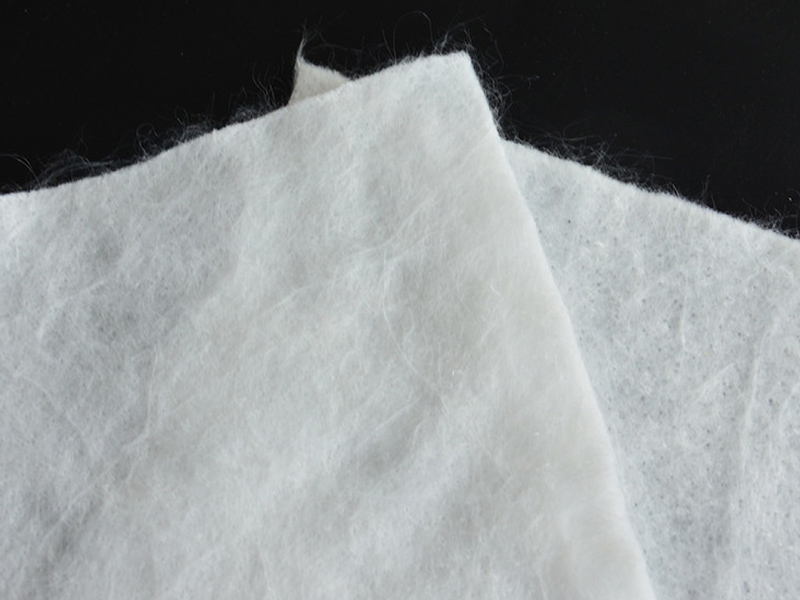
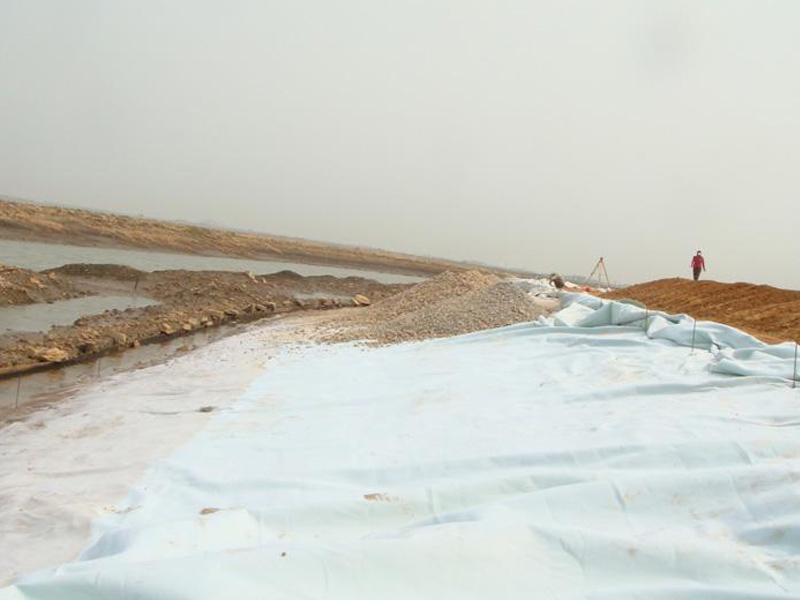
4. What Factors Should Be Considered When Choosing Right Geotextile Nonwoven Fabric?
4.1 Material
Geotextile nonwoven fabric is usually made of synthetic fibers such as polypropylene and polyester. Make sure the materials chosen are of good quality, durable and meet the specific engineering needs.One of the properties of pp material that is better than pet material is acid and alkali resistance.
4.2 Gram weight
Gram weight is an important indicator to measure the strength and tensile properties of geotextiles. Based on the specific needs of the project, select a geotextile of appropriate weight to ensure it can withstand the required loads and stresses.
4.3 Specifications and dimensions
Select non woven geotextile of appropriate specifications to meet the specific requirements of the project. Taking into account the coverage area and ease of construction, the appropriate length and width need to be selected.In order to facilitate loading, unloading and transportation, the width of geotextile is generally less than 6m, and the bigger gram weight, the smaller the length of each roll.
4.4 Physical and mechanical properties
The working environment of geotextile nonwoven fabric can be harsh, so it must have good hydrolysis resistance and wet mechanical properties to maintain its structural integrity and stability.
4.5 Weather resistance
If the geotextile nonwoven fabric will be used outdoors, a geotextile with good UV resistance should be selected to extend its service life.
4.6 Chemical stability
Considering that soil and water quality may exhibit different chemical properties, geotextile nonwoven fabric must have good chemical stability and be able to resist erosion by various chemical substances.
4.7 Water permeability
According to the project requirements, select a geotextile with appropriate water permeability. Some projects may require complete resistance to moisture penetration, while other projects may require the geotextile to have drainage capabilities.
4.8 Certifications and Standards
Ensure that the geotextile purchased meets relevant international or industry certifications and standards to ensure product quality and performance.
5. Conclusion
In conclusion, selecting the best non woven geotextile for a project is a critical decision that requires careful consideration of various factors to ensure optimal performance, durability, and cost-effectiveness.
From understanding the project requirements and site conditions to evaluating the physical properties, permeability, durability, and environmental impact of the geotextile, each step plays a crucial role in the selection process. Additionally, factors such as installation requirements, regulatory compliance, supplier reliability, and project-specific considerations must be taken into account to make informed decisions.By prioritizing functionality, physical properties, compatibility, durability, and cost-effectiveness, they can ensure that the chosen geotextile meets the project’s needs and delivers long-term performance and stability.
Choosing the best nonwoven geotextile fabric involves striking a balance between performance requirements and budget constraints while considering the unique characteristics and challenges of each project. With proper planning, research, and analysis, you can make informed decisions that lead to successful outcomes and contribute to the overall success and sustainability of civil engineering and construction projects with BPM Geotextile.

